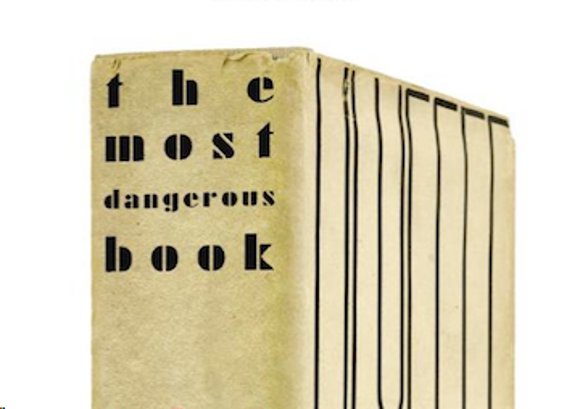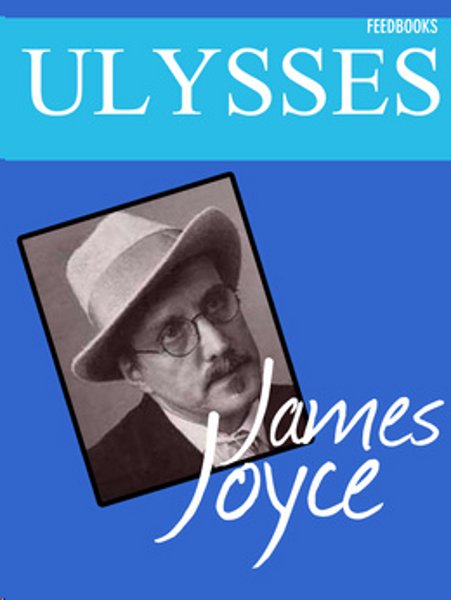The Story of James Joyce’s ‘Ulysses: From Contraband to Masterpiece

The Most Dangerous Book: The Battle for James Joyce’s Ulysses
Penguin
417 pages
Modern-day readers of a novel published in 1922 and banned as “obscene” in Europe and America might legitimately wonder what all the fuss was about. Almost a century later, in a culture saturated by explicit references to sex, masturbation and everything in between, the international uproar over references to sex and bodily functions in James Joyce’s Ulysses seems hard to imagine.
But, as Kevin Birmingham illustrates in his engagingly written “biography of a book,” the 720-page, epoch-defining work changed both the way novels are written and the way novels are read. The story of how this challenging book overcame the restrictions of puritanical censorship is well worth telling, and Birmingham does so with the right degree of enthusiasm, respect and attention to the key players.
“We take our freedom to read and write books for granted,” he writes, “and I want readers to see how difficult—and how recent—the fight for literary freedom has been.”
When sections of Joyce’s work in progress first appeared in installments in the Chicago-based Little Review, it became clear this was unlike anything readers had ever seen before. Each chapter of Ulysses assumes a different voice and format, with a head-spinning array of puns, allusions, unreliable narrators and, to complicate matters further, a lack of quotation marks. Based on Homer’s The Odyssey, the novel follows an ordinary citizen named Leopold Bloom as he makes his way through the streets of Dublin:
“Instead of an epic unfolding over the course of years, Ulysses would take place on one day,” Birmingham writes. “In the twenty-first century, a circadian novel seems natural. We are accustomed to the tick-tock of live reports, RSS feeds, status updates, and twenty-four-hour news cycles feeding us the perception that global events turn on single days. Yet in 1915, the notion that a single day was an appropriate time frame for an extended novel, or that in the limits of smallness we could find a culture’s grand pattern, was, to say the least, exotic.”
In the course of the story, Ulysses takes us deep into the minds of Bloom, his young friend Stephen Dedalus, and most famously, his lustful wife Molly. It’s her internal monologue at the end of the novel—recounting an adulterous affair in shocking, unpunctuated detail—that caused much of the uproar before and during the time of publication.

The novel became “literary contraband,” only available to readers “if you found a copy counterfeited by literary pirates or if you smuggled it past customs agents.” Authorities on both sides of the Atlantic confiscated copies of the book and often burned them. Finally, after numerous obscenity trials stretching over more than a decade, U.S. District Judge John M. Woolsey declared that Ulysses could be published in the U.S. It has since been judged (rightfully, in my view) the most influential novel of the 20th century.
The Most Dangerous Book encompasses accounts of Joyce’s many devoted supporters, including Ezra Pound, the lawyer John Quinn, the editors of The Little Review and, perhaps most importantly, Sylvia Beach, owner of the Paris-based bookstore Shakespeare & Company, who published Ulysses in book form when no one else would. They emerge as heroes in the struggle to make this ground-breaking work available to readers everywhere.
Joyce himself emerges as a heroic figure, albeit a deeply flawed one. His achievement is all the more remarkable considering his notoriously poor health, including a long history of chronic eye problems:
“The body was central to Joyce’s work because he was a captive of both its erotic pleasures and its intense pains. From as early as 1907 and into the 1930s, Joyce suffered from an illness that caused bouts of iritis (a swelling of his iris), which in turn brought about episodes of acute glaucoma and other complications that withered his eyesight almost to the point of blindness. He collapsed on city streets and rolled on the floor in pain during years of recurrent ‘eye attacks,’ and the agony of his illness was as traumatizing as the eye surgeries he underwent to save his vision—all of them performed without general anesthesia.”
Birmingham’s excruciatingly detailed accounts of these various eye attacks—and the medical procedures used to treat them (including leeches sucking on his eyelids)—form a significant contribution to the voluminous scholarship already in place on the life of James Joyce. Overall, The Most Dangerous Book offers a new dimension on the great artist when we might have justifiably assumed there was nothing more to tell.

Author Bio:
Lee Polevoi is Highbrow Magazine’s chief book critic and the author of The Moon in Deep Winter, a novel.




























































































































































































































































































































